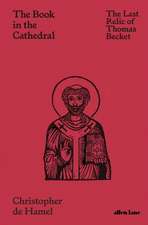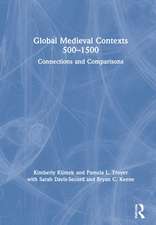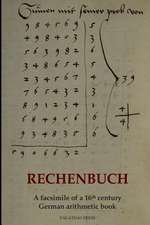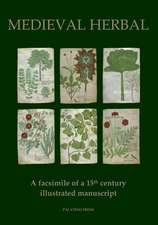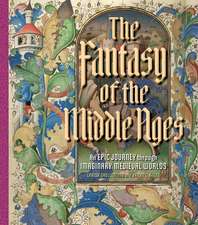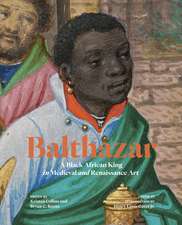Toward a Global Middle Ages: Encountering the World through Illuminated Manuscripts
Editat de Bryan C. Keeneen Limba Engleză Paperback – 29 aug 2019
This important and overdue book examines illuminated manuscripts and other book arts of the Global Middle Ages.
Illuminated manuscripts and illustrated or decorated books—like today’s museums—preserve a rich array of information about how premodern peoples conceived of and perceived the world, its many cultures, and everyone’s place in it. Often a Eurocentric field of study, manuscripts are prisms through which we can glimpse the interconnected global history of humanity.
Toward a Global Middle Ages is the first publication to examine decorated books produced across the globe during the period traditionally known as medieval. Through essays and case studies, the volume’s multidisciplinary contributors expand the historiography, chronology, and geography of manuscript studies to embrace a diversity of objects, individuals, narratives, and materials from Africa, Asia, Australasia, and the Americas—an approach that both engages with and contributes to the emerging field of scholarly inquiry known as the Global Middle Ages.
Featuring 160 color illustrations, this wide-ranging and provocative collection is intended for all who are interested in engaging in a dialogue about how books and other textual objects contributed to world-making strategies from about 400 to 1600.
Illuminated manuscripts and illustrated or decorated books—like today’s museums—preserve a rich array of information about how premodern peoples conceived of and perceived the world, its many cultures, and everyone’s place in it. Often a Eurocentric field of study, manuscripts are prisms through which we can glimpse the interconnected global history of humanity.
Toward a Global Middle Ages is the first publication to examine decorated books produced across the globe during the period traditionally known as medieval. Through essays and case studies, the volume’s multidisciplinary contributors expand the historiography, chronology, and geography of manuscript studies to embrace a diversity of objects, individuals, narratives, and materials from Africa, Asia, Australasia, and the Americas—an approach that both engages with and contributes to the emerging field of scholarly inquiry known as the Global Middle Ages.
Featuring 160 color illustrations, this wide-ranging and provocative collection is intended for all who are interested in engaging in a dialogue about how books and other textual objects contributed to world-making strategies from about 400 to 1600.
Preț: 393.77 lei
Nou
Puncte Express: 591
Preț estimativ în valută:
75.35€ • 78.67$ • 62.36£
75.35€ • 78.67$ • 62.36£
Carte disponibilă
Livrare economică 14-28 martie
Livrare express 28 februarie-06 martie pentru 57.94 lei
Preluare comenzi: 021 569.72.76
Specificații
ISBN-13: 9781606065983
ISBN-10: 160606598X
Pagini: 296
Ilustrații: 176 color illustrations, 1 map
Dimensiuni: 203 x 254 x 25 mm
Greutate: 1.11 kg
Ediția:1
Editura: Getty Publications
Colecția J. Paul Getty Museum
ISBN-10: 160606598X
Pagini: 296
Ilustrații: 176 color illustrations, 1 map
Dimensiuni: 203 x 254 x 25 mm
Greutate: 1.11 kg
Ediția:1
Editura: Getty Publications
Colecția J. Paul Getty Museum
Recenzii
Toward a Global Middle Ages: Encountering the World through Illuminated Manuscripts showcases a kaleidoscopic and multifaceted premodern world though decorated books of many kinds. That variegated world, stretching from the Americas to Afro-Eurasia to Austronesia, is offered to the reader through extraordinary images and thoughtful essays that delight, instruct, and surprise us.
With imagination and verve, Bryan C. Keene curates a selection of essays and images that attest how book arts, in conceptualizing and depicting the lived and imagined worlds of their time, played a complex role in forging early globalisms. Those of us who research, teach, and study a Global Middle Ages (gratifyingly, this volume’s editor, unlike many scholars, is alive to the problematic character of this now-popular term for naming the past) are richly rewarded by the perspicacity and diversity exhibited in this sumptuous, magnificent volume.
This book should be on everyone’s shelves.
—Geraldine Heng, founder and director of the Global Middle Ages Project and Perceval Professor at the University of Texas at Austin
With imagination and verve, Bryan C. Keene curates a selection of essays and images that attest how book arts, in conceptualizing and depicting the lived and imagined worlds of their time, played a complex role in forging early globalisms. Those of us who research, teach, and study a Global Middle Ages (gratifyingly, this volume’s editor, unlike many scholars, is alive to the problematic character of this now-popular term for naming the past) are richly rewarded by the perspicacity and diversity exhibited in this sumptuous, magnificent volume.
This book should be on everyone’s shelves.
—Geraldine Heng, founder and director of the Global Middle Ages Project and Perceval Professor at the University of Texas at Austin
“A book with real intellectual (and literal) heft. . . . Toward a Global Middle Ages does an admirable job at showing some of the ways the medieval world was much bigger than we tend to think.”
“A nuanced and balanced study of the interconnectedness of reading, writing and illustrating in the world before printing.”
“This exciting and handsomely produced volume offers 22 studies, by an international team of authors, addressing what a “global Middle Ages” might mean for the study of illustrated manuscripts. . . . All essays are annotated, and the cumulative bibliography, which includes studies from many disciplines, is a goldmine. Seldom has this reviewer learned so much, and with such pleasure. This is a challenging first attempt at an overview and a great achievement. . . . Highly recommended.”
“Toward a Global Middle Ages covers unique aspects of visual culture during this time period with overall thoughtfulness, while acknowledging how complicated it is to record some of these histories in a traditionally published text. Color figures and captioned images illustrating the text, together with endnotes, improve the readability of the book and make it easy for the reader to build context and access additional information. . . . It is recommended for undergraduate art history collections, particularly those emphasizing interdisciplinary approaches to visual culture, art, architecture, religious studies, colonialism, travel, trade, and area studies.”
“The book . . . serves as a compact, essentially non-European, medieval encyclopedia. . . . Abundantly illustrated with excellent color illustrations, this volume is as handsome as it is intellectually stimulating.”
“Offers a timely response to a swiftly changing field. . . . Keene presents an open-ended book that speaks to the vibrancy, energy, and aspirations of medieval studies today.”
“The volume is particularly strong on reconceptualizing “book(s).” Far more manuscripts survive from Europe than from any other part of the world. . . . One can compensate for the lack of material outside Europe by expanding the definition of books: Byron Ellsworth Hamann uses M. T. Clanchy’s definition of “memory-retaining objects,” which extend beyond books to include “bones of the saints encased in gold, Gospel books studded with gems, charters and seals wrapped in Asiatic silks, finger rings, knives symbolizing conveyances, and so on” (73).”
“Compelling. . . . Embraces a diversity of individuals, objects, stories, cultures, and traditions, and engages the reader in an inspiring conversation about illustrated books and globality.”
Notă biografică
Bryan C. Keene is an assistant professor of art history at Riverside City College and a former associate curator of manuscripts at the J. Paul Getty Museum. He specializes in Italian manuscript illumination and codex cultures of the global Middle Ages.
Descriere
This important and overdue book examines illuminated manuscripts and other book arts of the Global Middle Ages.


